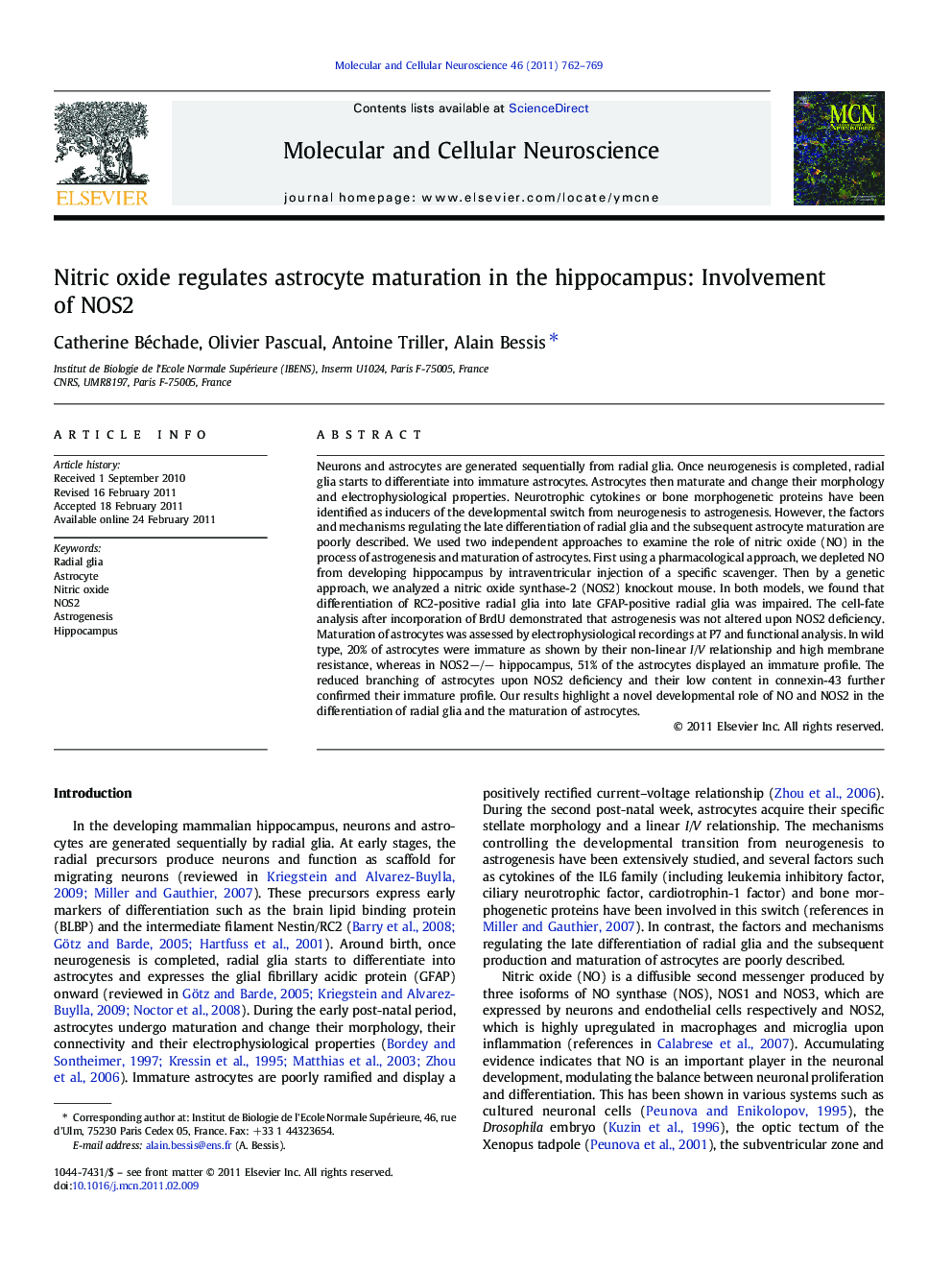| Article ID | Journal | Published Year | Pages | File Type |
|---|---|---|---|---|
| 2198653 | Molecular and Cellular Neuroscience | 2011 | 8 Pages |
Abstract
Neurons and astrocytes are generated sequentially from radial glia. Once neurogenesis is completed, radial glia starts to differentiate into immature astrocytes. Astrocytes then maturate and change their morphology and electrophysiological properties. Neurotrophic cytokines or bone morphogenetic proteins have been identified as inducers of the developmental switch from neurogenesis to astrogenesis. However, the factors and mechanisms regulating the late differentiation of radial glia and the subsequent astrocyte maturation are poorly described. We used two independent approaches to examine the role of nitric oxide (NO) in the process of astrogenesis and maturation of astrocytes. First using a pharmacological approach, we depleted NO from developing hippocampus by intraventricular injection of a specific scavenger. Then by a genetic approach, we analyzed a nitric oxide synthase-2 (NOS2) knockout mouse. In both models, we found that differentiation of RC2-positive radial glia into late GFAP-positive radial glia was impaired. The cell-fate analysis after incorporation of BrdU demonstrated that astrogenesis was not altered upon NOS2 deficiency. Maturation of astrocytes was assessed by electrophysiological recordings at P7 and functional analysis. In wild type, 20% of astrocytes were immature as shown by their non-linear I/V relationship and high membrane resistance, whereas in NOS2â/â hippocampus, 51% of the astrocytes displayed an immature profile. The reduced branching of astrocytes upon NOS2 deficiency and their low content in connexin-43 further confirmed their immature profile. Our results highlight a novel developmental role of NO and NOS2 in the differentiation of radial glia and the maturation of astrocytes.
Related Topics
Life Sciences
Biochemistry, Genetics and Molecular Biology
Cell Biology
Authors
Catherine Béchade, Olivier Pascual, Antoine Triller, Alain Bessis,
